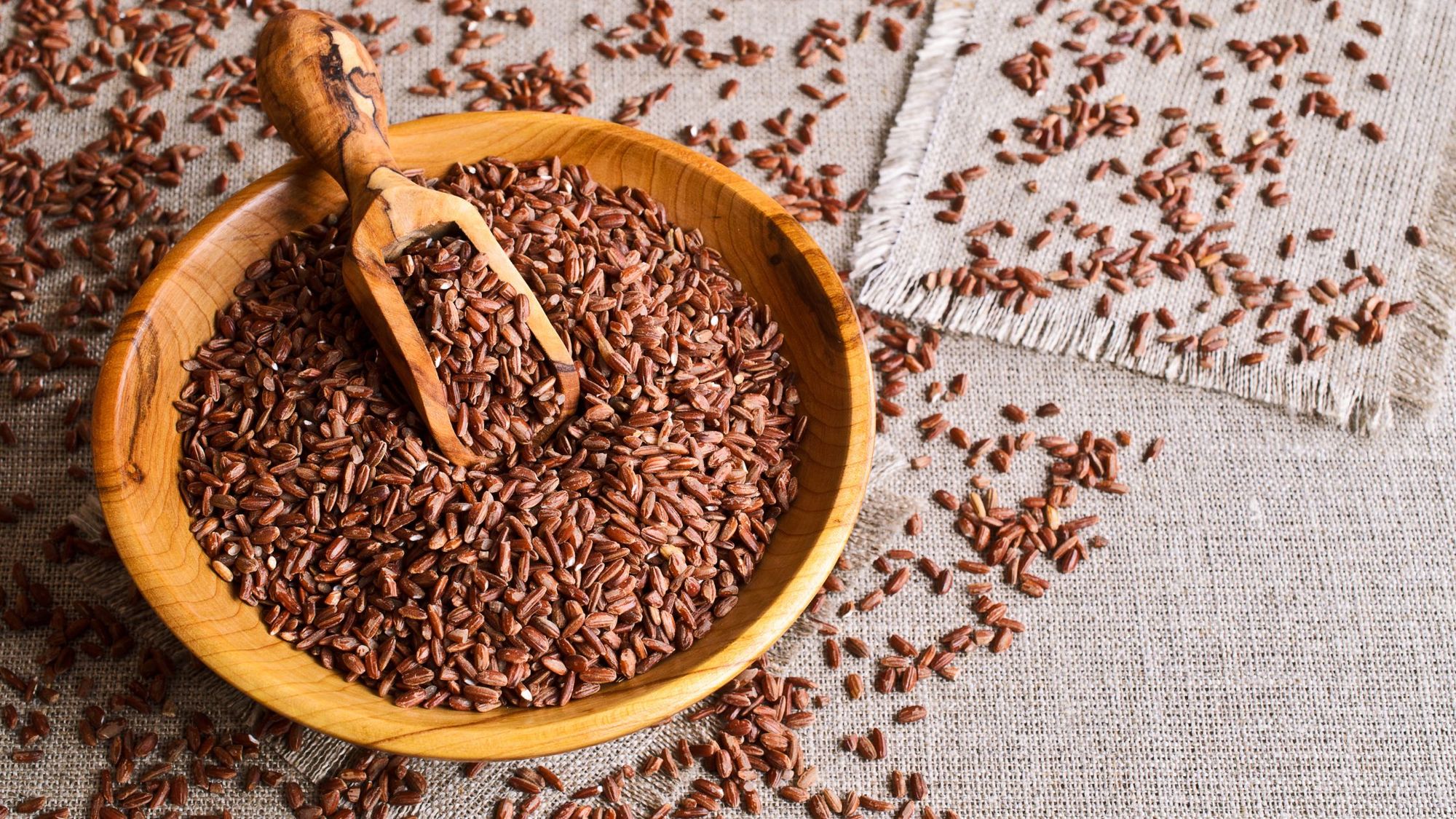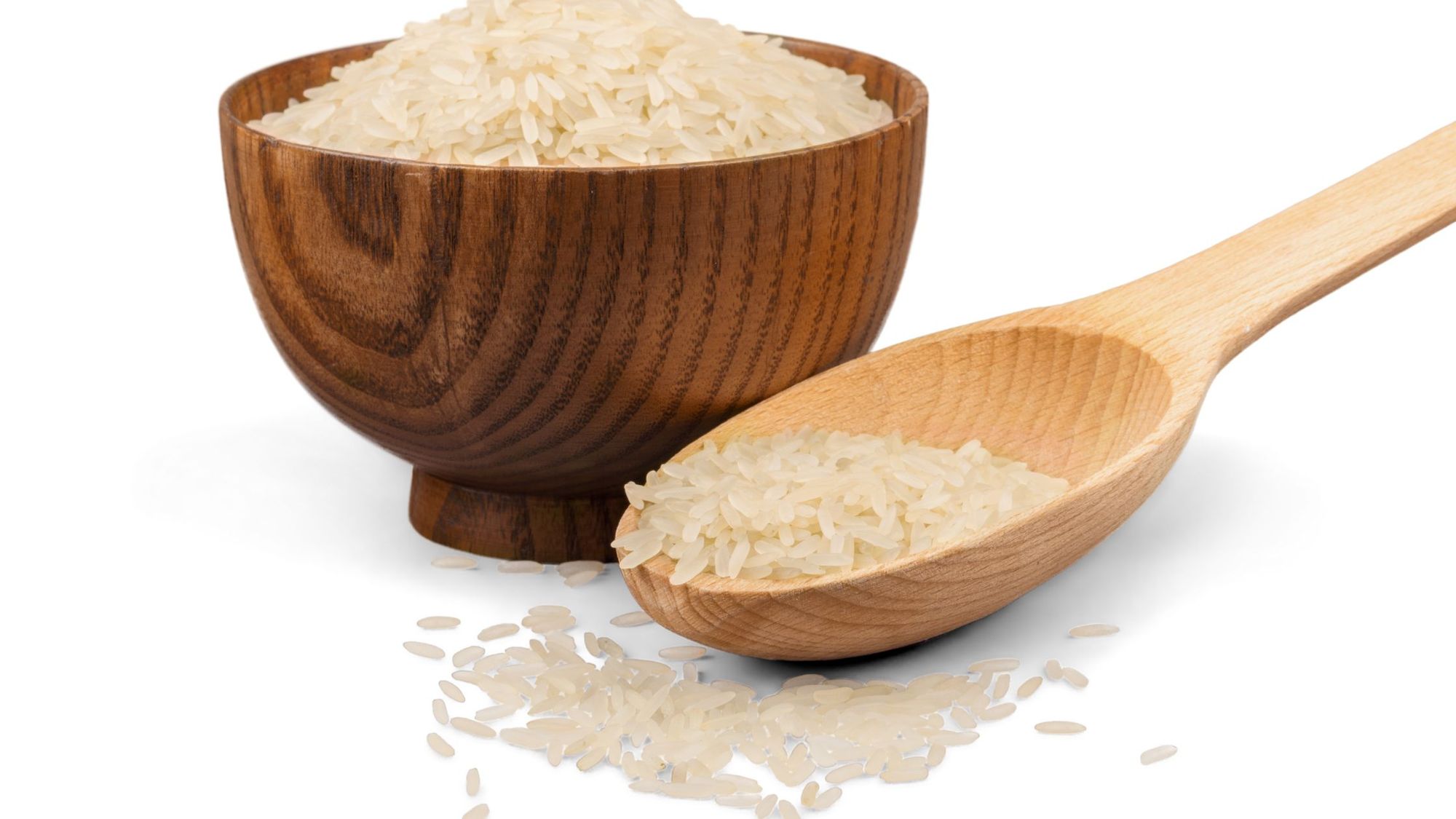
The different types of rice and their benefits are important pieces of information to know, as is understanding what the healthiest type of rice to eat might be. Knowing this information can help you to decide which types of rice to pair with your dishes such as homemade curries and stir-fries.
Furthermore, exploring different types of rice might just introduce you to new and interesting rice that can add a burst of flavor or color to your chosen dishes.
You might be wondering what the healthiest type of rice is, since it goes without saying that some types of rice are healthier than others.
All forms of rice have their own set of health benefits, and it can also come down to personal preference in terms of texture and flavor. For example, many people know that white rice might not be the healthiest type, but still prefer it to brown rice for its soft texture.
However, maybe the taste of brown rice just requires some getting used to?
In this guide, we’ll take you through the most commonly found types of rice on the market, and what makes them healthier – or less healthy – than others.
The Healthiest Type of Rice: What Makes Rice Healthy?
Rice in moderation is pretty healthy in general, providing a rich source of carbohydrates to fuel our bodies and give us the energy we need to perform our daily tasks. The amount of sodium, fat, and cholesterol found in rice is also exceptionally low, which adds to its health benefits. The high levels of fiber are also excellent for keeping you regular and reducing obesity.
Of course, there are also different health benefits based on the varying types of rice. For example, whole grains are better for our health when compared to simple carbs – which is why brown rice or black rice are regarded as the healthiest options. You should certainly be looking into eating whole grain rice.
Furthermore, some types of rice have lower levels of carbs, or lower calories, than others.
There are also general nutritional differences between types of rice. Brown and black rice, for example, tend to be exceptionally rich in nutrients when compared to white rice which is lacking. Even red rice and wild rice have an excellent nutritional density that could even rival that of classic brown rice.
Read More: The Impact of Rice on Blood Sugar Levels: What You Need to Know
Different Types of Rice and Their Unique Health Benefits
There are five main types of rice, and they act as the foundation for many delicious recipes. Even jasmine rice and sushi rice fall into these categories – the latter being short-grain white rice that has been specially prepared. You won’t find things like cauliflower rice here (since it is literally just finely chopped cauliflower) but you’re about to find out what makes rice nutritious.

1. Brown Rice
The thing that makes brown rice different from white rice is that it has had its hull removed, so it contains the germ and the bran layer. This is what makes this whole-grain rice so nutritious, and it might have a rougher texture than white rice, but it still tastes good.
The bran found in brown rice is rich in flavonoid antioxidants, which are essential in aiding disease prevention – including the prevention of heart disease.
While it is similar to white rice in terms of carbs and calories, brown rice has significantly more fiber and protein than white rice – making it more beneficial to your health. Furthermore, studies have shown that it can help to regulate insulin and blood sugar levels. This, in combination with the wide variety of vitamins and minerals that it contains, makes it an excellent choice for those who have diabetes.
1 cup Cooked Brown Rice = 202g
Calories: 248 kcal
Protein: 5.54 g
Carbs: 51.7 g
Fiber: 3.23 g
Total Sugars: 0.079 g
Fat: 1.96 g

2. White Rice
White rice is exceptionally popular, even if it’s not the healthiest type of rice. It tends to be the cheapest option out of all the types of rice, it’s delicious, and it has a great texture. Furthermore, it pairs really nicely with a range of dishes (especially curry). However, the husk, bran, and germ are all removed to help extend the shelf-life, which has a negative impact on the nutritional value because of the way it’s processed.
As a result, white rice is not the healthiest type of rice, because white rice is lower in fiber and protein than other types of rice which means it’s not very filling. This could lead to late-night snacking.
White rice also loses a lot of the vitamins and minerals that make rice good for you, and it has an increased impact on blood sugar levels when compared to other types of rice. Finally, it is lacking in antioxidants when compared to black, brown, red, or wild rice.
1 cup Cooked White Rice = 158g
Calories: 205 kcal
Protein: 4.25 g
Carbs: 44.6 g
Fiber: 0.632 g
Total Sugars: 0.079 g
Fat: 0.442 g
3. Black Rice
Dieters love Black rice for a reason. But did you know that black rice was commonly known as ‘forbidden rice’, likely because it is thought that only Chinese royalty used to be allowed to eat it? You’ll find that Jasmine rice and Indonesian black rice fall under this category, and while black rice is black when raw, it often turns purple when cooked – hence why it has a strong association with royalty.
Black rice contains the least amount of calories and carbs per cup, and it’s considered to be the richest in antioxidants out of every rice variety, which makes it the best choice from a nutritional standpoint and a weight loss standpoint. The antioxidants contained in black rice are especially effective at providing anti-inflammatory effects, and studies have even shown that it has the potential to have anti-cancer properties that could be promising for preventative health.
1 cup Cooked Black Rice = 105g
Calories: 150 kcal
Protein: 3 g
Carbs: 34 g
Fiber: 1 g
Total Sugars: 0.5 g
Fat: 0.5 g
4. Red Rice
Red rice is gorgeous in terms of color, and it can add so much vibrancy to a dish. Presentation wise, it might be fun to use red rice if you’re hosting a dinner party. It contains a lot more fiber and protein than white rice, but it is also rich in antioxidants to a level that is almost as good as black rice (and better than brown rice). The flavonoid antioxidants found in red rice are extremely beneficial to the body.
What studies have shown is that the antioxidants found in red rice are the best at fighting off free radicals. Not only that, but the antioxidants can also reduce inflammation levels in the body and are excellent for combating chronic illnesses such as heart disease. The main downside is that red rice is not as widely available as other forms, despite being delicious.
1 serving Cooked Red Rice = 130g
Calories: 220 kcal
Protein: 5 g
Carbs: 44 g
Fiber: 3 g
Total Sugars: 1 g
Fat: 2 g
5. Wild Rice
Do you want to know something interesting? Wild rice isn’t technically rice as it’s actually the seeds from various aquatic grasses. It does look like rice and taste like rice, though. Furthermore, the way it’s used in cooking is just like rice, and so it tends to be classified as such. It has the highest concentration of calories and carbs, but it is a whole grain that is exceptionally filling and packed with nutrients.
Wild rice has much more fiber and protein than white rice, but be wary of wild rice portions if you’re counting calories or carbs, because it’s got the highest calorie count and the highest carb count of all the types of rice.
Studies have shown that wild rice is exceptionally effective at reducing cholesterol and oxidative stress in addition to the reduction of insulin resistance.
Wild rice also contains tons of antioxidants and an array of vitamins and minerals that make this one of the most nutritionally-rich forms of rice.
1 cup cooked Wild rice = 164 g
Calories: 166 kcal
Protein: 6.54 g
Carbs: 34.9 g
Fiber: 2.95 g
Total Sugars: 1.2 g
Fat: 0.558 g
To Conclude: What’s the Healthiest Type of Rice?
Brown rice is universally acclaimed as the healthiest option if you want to eat rice, but black rice and red rice are equally nutritious if you want to try something a little different. The key to everything in life is moderation. If you love white rice, you don’t need to change your diet. You just have to remember to maintain a diet that is nutritionally balanced.
Be careful when it comes to rice and portion sizes. Don’t serve yourself big scoops of rice. If you’re trying to maintain a healthy weight, measure out just 1 cup of cooked rice, and serve yourself that amount.
While you’re here learning about the healthiest type of rice, why not get a DNA test from CircleDNA to learn more about your health? The results of this at-home DNA test can help you determine the optimal diet plan for you, based on your genetic makeup. You’ll also learn which specific nutrients your body needs more of in order to thrive.
References:
- Kozłowska A;Szostak-Wegierek D. Flavonoids–food sources and health benefits. Roczniki Panstwowego Zakladu Higieny. 2014;65(2). Accessed January 17, 2023. https://pubmed.ncbi.nlm.nih.gov/25272572/
- Mohan V, Spiegelman D, Sudha V, et al. Effect of Brown Rice, White Rice, and Brown Rice with Legumes on Blood Glucose and Insulin Responses in Overweight Asian Indians: A Randomized Controlled Trial. Diabetes Technology & Therapeutics. 2014;16(5):317-325. doi:10.1089/dia.2013.0259
- Chang H, Lei L, Zhou Y, Ye F, Zhao G. Dietary Flavonoids and the Risk of Colorectal Cancer: An Updated Meta-Analysis of Epidemiological Studies. Nutrients. 2018;10(7):950. doi:10.3390/nu10070950
- Hosoda K, Sasahara H, Matsushita K, Tamura Y, Miyaji M, Matsuyama H. Anthocyanin and proanthocyanidin contents, antioxidant activity, and in situ degradability of black and red rice grains. Asian-Australasian Journal of Animal Sciences. 2018;31(8):1213-1220. doi:10.5713/ajas.17.0655
- Han SF, Zhang H, Zhai CK. Protective potentials of wild rice (Zizania latifolia (Griseb) Turcz) against obesity and lipotoxicity induced by a high-fat/cholesterol diet in rats. Food and Chemical Toxicology. 2012;50(7):2263-2269. doi:10.1016/j.fct.2012.04.039
- Pletsch EA, Hamaker BR. Brown rice compared to white rice slows gastric emptying in humans. European Journal of Clinical Nutrition. 2017;72(3):367-373. doi:10.1038/s41430-017-0003-z







Comments are closed.